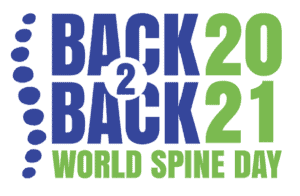Lower back pain and back pain generally are extremely common problems. According to an Australian Bureau of Statistics 2014-15 National Health Survey about 3.7 million Australians or 16% of the population have back problems. It is estimated that 70-90% of people will suffer with lower back pain at some time in their lives. Back problems were the 3rd leading cause of disease burden in Australia in 2011. (www.aihw.gov.au)
Lower back problems can have many causes as seen below, and pain in the lower back can be associated with tingling, numbness and weakness in the legs. It can be short term in nature or acute, or longer term which is classified as chronic (an episode lasting longer than 12 weeks).
What causes lower back pain?
The most common form of lower back pain is mechanical and is the result of either a strain/ sprain injury or as a result of degenerative changes that typically occur in the spine as a result of ageing. Many other causes exist such as disc bulges and herniations, nerve compression (radiculopathy), and more serious mechanical problems related to trauma. (www.ninds.nih.gov/disorders)
Some mechanical cases of back pain can be attributed to scoliosis which is an atypical curvature of the spine. Cases of lower back pain with mechanical causes are where Chiropractic care and treatment can be most effective.
Lower back pain is rarely related to serious underlying conditions, but when these conditions do occur, they require immediate medical attention. Serious underlying conditions include: infections, kidney stones and other life threatening conditions.
Where a serious underlying condition is the cause of lower back pain, chiropractors, being highly trained in identifying these cases, will refer the patient for further medical attention.
Other underlying conditions that predispose people to lower back pain can include inflammatory joint conditions like osteoarthritis and rheumatoid arthritis; osteoporosis (thinning of the bones making them weaker); endometriosis (abnormal growth of uterine tissue) and fibromyalgia (a chronic pain syndrome).
What are the risk factors for developing low back pain?
Risk factors for the cause of lower back pain fall into a few main categories:
Age: Lower back pain typically is the result of instability in the spine in younger people which settles as one ages. In older people it is more typically the result of degenerative changes in the spine. Other health issues such as a loss of bone density (osteoporosis) are linked with advancing age.
Fitness level: Lack of physical fitness and weakened core muscles can often lead to lower back pain. Studies show that low-impact aerobic exercise is beneficial for maintaining the integrity of intervertebral discs.
Pregnancy is commonly accompanied by low back pain, which results from pelvic changes and alterations in weight loading.
Weight gain: Increased physical stress on the joints can lead to low back pain, as can some genetic arthritic conditions,
Stress is a common factor but more commonly linked with upper back and neck pain conditions,
Occupational risk factors can often contribute to low back pain, be it because a person has a physically demanding job, or one that is sedentary.
Lifestyle and posture are big determinants on whether lower back pain occurs due to incorrect mechanical loading of the spine.
References





